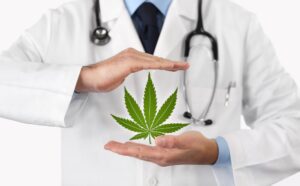Hypertension is included in the group of diseases of civilization. Bad habits, lack of physical activity and an unhealthy lifestyle directly contribute to the development of this condition. Hypertension is a very well-recognized disease, but in recent years scientists have focused on studying the effects of medical marijuana on blood pressure values. The results are really promising. Learn everything you need to know to effectively prevent hypertension in yourself and your loved ones.
What is hypertension?
Hypertension is a serious problem that occurs when blood pressure in the arteries exceeds normal. Blood pressure depends on both the force the heart uses to pump blood and the degree of narrowing of the arteries. If the heart pumps the blood too hard or the arteries resist its flow, blood pressure will rise. Be aware that in hypertension, the one cause drives the other. Too much blood pressure on the walls of the arteries, caused by high ejection force, will cause their lumen (diameter) to gradually thicken and narrow, which directly contributes to an even greater increase in pressure and even more pressure.
Blood pressure values
The guideline chooses a blood pressure cutoff value above which the benefits of treatment, demonstrated in interventional clinical trials of blood pressure-lowering therapy, are considered more important than the harms associated with it. According to this approach, the cutoff point that defines hypertension is 140/90 mmHg using standard clinical measurement methods. The same guideline takes into account the different degrees of severity of hypertension, dividing it into categories above the cutoff threshold. Hypertension is defined as
- Grade 1 – systolic pressure of 140-159 mmHg or diastolic pressure of 90-99 mmHg
- Grade 2 – systolic pressure of 160-179 mmHg or diastolic pressure of 100-109 mmHg
- Grade 3 – systolic pressure of 180 mmHg or diastolic pressure of 110 mmHg and higher.
Risks of hypertension
Hypertension is both a disease and a major risk factor for other conditions. As blood pressure rises, the incidence of cardiovascular events such as stroke, myocardial infarction, heart failure, atrial fibrillation and premature mortality increases. Hypertension is a silent disease. Many people experience no visible symptoms. Some people experience headaches, nosebleeds or shortness of breath, but they are a small minority of those suffering from hypertension. However, even those who do experience these symptoms may not realize the true cause, as there are many other conditions that have similar symptoms.
Change in the structure of blood vessels
High blood pressure is dangerous because it leads to problems that are difficult to detect. Over time, high blood pressure can cause arteries to thicken and harden, increasing the likelihood of a fatal heart attack or stroke. In some cases, it can cause blood vessels to weaken and bulge, which can lead to aneurysms.
Metabolic disorders
Some people experience other physical problems, such as vision loss or kidney problems. Some also experience metabolic problems that can lead to weight gain or the development of diabetes.
Concentration problems
Hypertension can also cause mental problems. Narrowed arteries can impede blood flow to the brain and cause dementia. Many people with high blood pressure also have problems remembering and absorbing new information.
What causes the development of hypertension?
Hypertension is one of the most common medical problems, partly because there are a great many factors that can contribute to its development. It is possible to have some of these characteristics without having hypertension, and it is also possible to develop hypertension without having all of them. Here are common factors that increase the risk of developing hypertension:
- Excessive consumption of salt
- Drinking too much alcohol
- Being overweight
- Lack of exercise
- Hypertension in the family
- Kidney disease
- Sleep apnea
- Aging
Some of these factors, such as old age and family predisposition to the disease, cannot be avoided. But most of the others are lifestyle factors that can be controlled. It takes some hard work, but it is possible to reduce the risk of developing hypertension.
Medical marijuana – how can hypertension be prevented?
One of the best ways to control the risk of hypertension is to eliminate the factors that cause it. Everyone can benefit from healthy habits, but this is especially important for people with a family history of hypertension. In recent years, it has been proven that in addition to physical activity and a proper diet, medical marijuana has a real impact on excessively high blood pressure values. The fight against hypertension may look different and may have varying results, but the use of medical marijuana in the treatment of hypertension has unexpected beneficial effects.
Medical marijuana and hypertension
As for medical marijuana and high blood pressure, there have been numerous studies that have shown truly surprising results. In the studies, medical marijuana had an effect on blood pressure only in people who already had high blood pressure, while it had no effect on study participants with normal blood pressure. There is a reason for this phenomenon.
Medical marijuana – what does the science say?
A study was conducted that confirmed the beneficial effects of medical marijuana on blood pressure values. High blood pressure, in the heart and blood vessels, correlates with more CB1 receptors than normal blood pressure. CB1 receptors are small structures on cells that act as a link that allows the cell to interact with marijuana. When there are more CB1 receptors in a cell, it becomes even more sensitive to the effects of medical marijuana. In hypertension, more CB1 receptors are produced, so the heart and blood vessels were more sensitive to the effects of marijuana compared to normal blood pressure.
When medical marijuana begins to affect these receptors, it has the effect of lowering blood pressure by reducing the force with which the heart pumps blood. The rhythm of the heartbeat slows down and takes on a monotonous pace, causing blood to begin circulating more slowly throughout the circulatory system. Reducing the force with which the heart pumps blood lowers blood pressure, causing blood vessels to relax. I would compare it to widening the diameter of a garden house, which lowers water pressure. Medical marijuana relaxes stressed blood vessels, resulting in an increase in their diameter. As a result, blood presses against the arterial walls with less force.
After 3 months of follow-up, the average daily systolic and diastolic blood pressure in the patients studied decreased by 5.0 mmHg and 4.5 mmHg, respectively. Among the hypertensive subjects studied, cannabis treatment for 3 months was associated with a reduction in systolic and diastolic blood pressure values over 24 hours with measurement 3 hours after cannabis treatment.
Healthy lifestyle
Diet and exercise can make a big difference. They help control body weight, which reduces the overall risk of disease. In the modern world, most people have a relatively poor diet, so making healthy changes can make a big difference, even though it is a relatively small modification. Combining changes in dietary habits and increased physical activity with the use of medical marijuana, can yield very beneficial results in the fight against hypertension.
It is important to remember that medical marijuana therapy can be an effective adjunct in the fight against hypertension, but in no way can it replace drug treatment. If you have any doubts, you should contact your treating physician to avoid unwanted complications.




